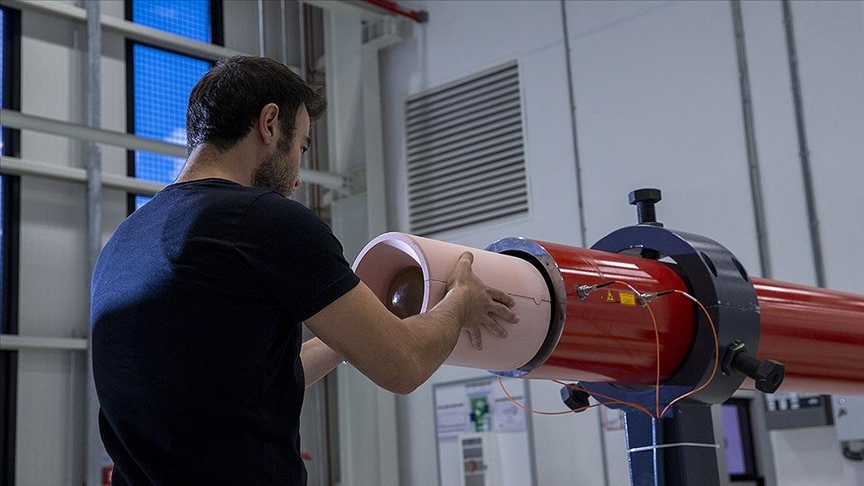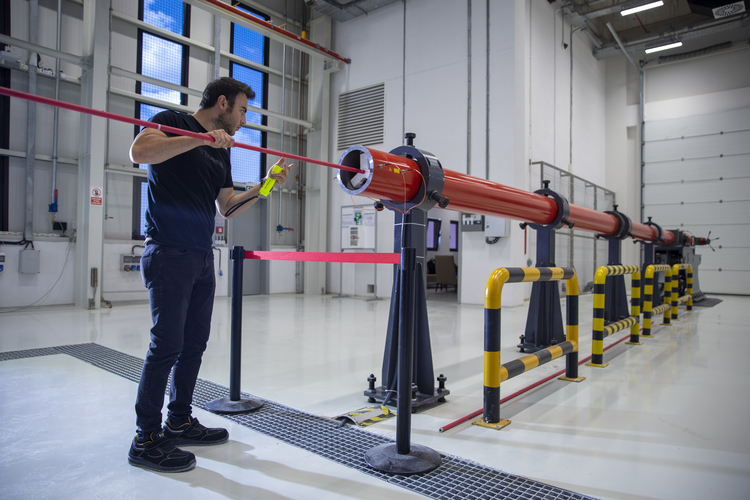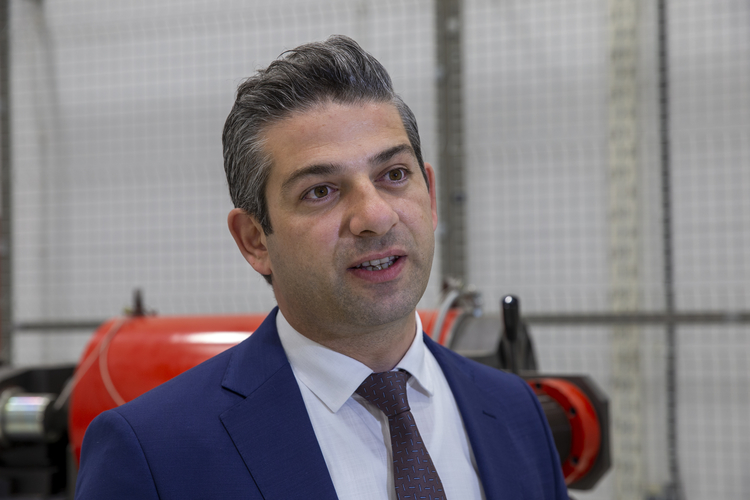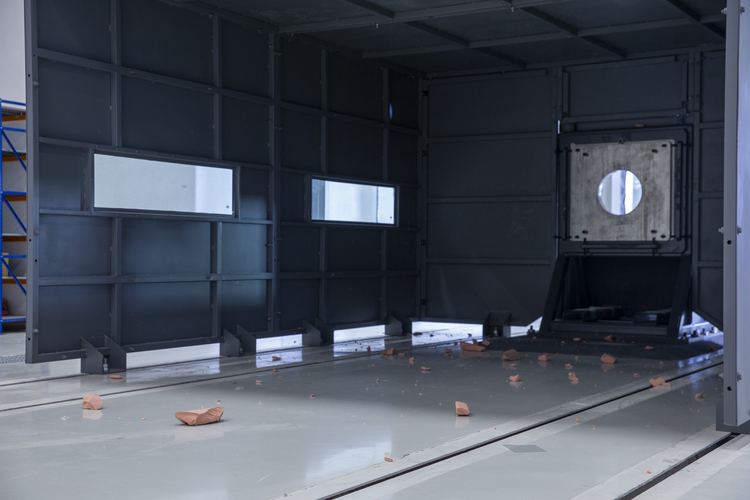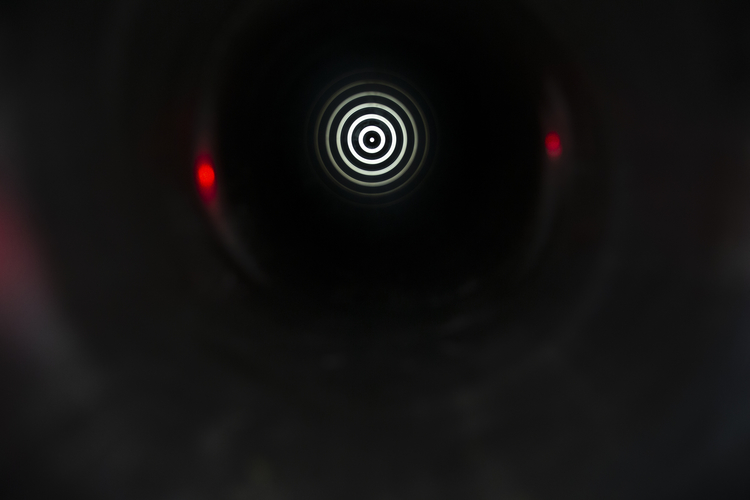"Bird strike tests" of national aircraft to be held in Turkey
Established within the body of Turkish Aerospace Industries, Turkey's first Bird Impact Test Facility opened its doors to Anadolu Agency.
Goksel Yildirim |26.06.2022
Photograph: Murat Gök - AA
Bird strike tests of Turkey's original aircraft projects will now be conducted domestically.
Turkey's first Bird Impact Test Facility, which will support the development and production processes of aircraft such as National Combat Aircraft, Hürjet and Gökbey, opened its doors to Anadolu Agency.
With the Bird Impact Test Facility, the infrastructure to be used in the studies carried out to ensure that the aircraft suffer the least damage in the bird strike, which is considered one of the biggest threats to aviation, was brought to Turkey. At the facility, the damage to the aircraft component as a result of throwing bird molds formed in gel form in various masses with a method similar to the ball system will be determined. The test data to be obtained will be reflected in the design of the aircraft.
Turkish Aerospace Industries Structural Test Manager Ömer Faruk Türkmen told Anadolu Agency (AA) that the facility became operational 2 months ago and that they are ready to test after the final touches.
Stating that manufacturers should test aircraft under two conditions, Türkmen said:
They need to certify the aircraft in terms of accident resistance and survivability. This is basically completed by throwing the gelatin and obtaining a certificate if there is no problem after the crash. The second is the work we do to perfect our designs. The weight, size, volume, geometry, impact speed, impact impact of the gelatin we throw. We can record and measure the effect of time, the tension, the force, the dispersion of the gelatin after hitting the line, the shape of the plane, everything. In this way, we can reach the result with design and measurement, not 'This did not happen, let's move on to the next'."
Parts will not go abroad, testing cost will be reduced
Turkmen stated that before the test facility was established, bird strike tests were carried out abroad for the most critical parts of the aircraft.
"For example, the canopy of Hürkuş went abroad, and after throwing the gelatin at a certain weight and speed, it was tested whether it broke or not. It passed or did not pass the test, other than that there was no information and it was mostly certification tests." Türkmen said that there were difficulties in finding a place in the test schedule of these limited centers, that limited tests could be carried out, and this negatively affected their project schedules.
Emphasizing that conducting bird trapping tests in Turkey provides a significant advantage in terms of cost, Türkmen said, "We can do these tests with one fifth of the fee paid abroad." said.
Türkmen stated that the facility could serve the Turkish Aerospace Industries as well as ASELSAN, TEI, subcontractors that make transparent structures, companies that make wind turbines and blades.
Projects will not wait for each other
In response to the question, "Whether there will be a priority among the projects carried out by the company in the tests to be carried out at the facility, and with which project the tests will begin," Türkmen said, "We will start with all of them. First, we do not have a ranking as Hürjet, Milli Muharip Airplane, Gökbey. We have established the infrastructure to do all of them maybe 1 day apart. The gelatin we use. "We prepared the bird model and sabots accordingly, we made our infrastructure and personnel employment accordingly, we trained our engineers accordingly, and we set up our field accordingly. So there will be no such thing as one project waiting for another here. Whoever brings the part first, we will start with them." gave the answer.

Pointing out that they were able to take all measurements related to the shot made thanks to the infrastructure, Türkmen said that by comparing this with the data in the simulation environment, a great time was saved and the design was perfected in terms of accident resistance and survivability.
Noting that there is no number for the bird impact test to be applied to the aircraft, Türkmen said:
"Actually, there is no certain number. Aircraft encounter flocks of birds during take-off or landing. In fact, the aircraft hits the bird. In the meantime, the aircraft must be survivable, that is, it must be able to continue its mission and land. When we think of a jet, a radom in the front, there is the nose. Then you can say canopy, attack surfaces, vertical tail attack surface. There are as many tests as there are different parts here. For example, we are considering 6 test campaigns for a project. With these test campaigns, after 1-2 calibration shots, data acquisition shots are started "You have to fire at least 3 shots to ensure repeatability. You see if you get the same results from 3 shots. You transfer this data to the crash resistance and survivability teams and compare them with their analysis."
25-ton impact from a 1.8-kilogram bird
Ömer Faruk Türkmen said that they created a gelatin bird that simulates birds weighing from 0.5 to 3.5 kilograms, in accordance with the standards set for the bird strike test.
Turkmen also gave information about the test process and said:
we would like to install a separate radar, we would like to change the canopy, no problem. We shoot for his new design and collect his data."
Emphasizing that a 1.8-kilogram bird, combined with the speed of the aircraft, will create an impact of approximately 25 tons in a project, Türkmen stated that for the test to be successful, the aircraft part must withstand the impact and continue its survivability.
Ömer Faruk Türkmen, pointing out the importance of the support given in this process, said, "Both our General Manager, our President of Defense Industry and our President give us great support. We only need support. Thanks to this support, our engineers can establish these infrastructures very quickly. In general, bird strikes. "The infrastructure is actually a very small infrastructure. There is a very large infrastructure setup, which includes the Yıldırım test facility, the structural test facility, and Demir Kuş. It provides great benefits to us so that the work done in the computer environment is completely correlated with reality, matched with the reality." said.








